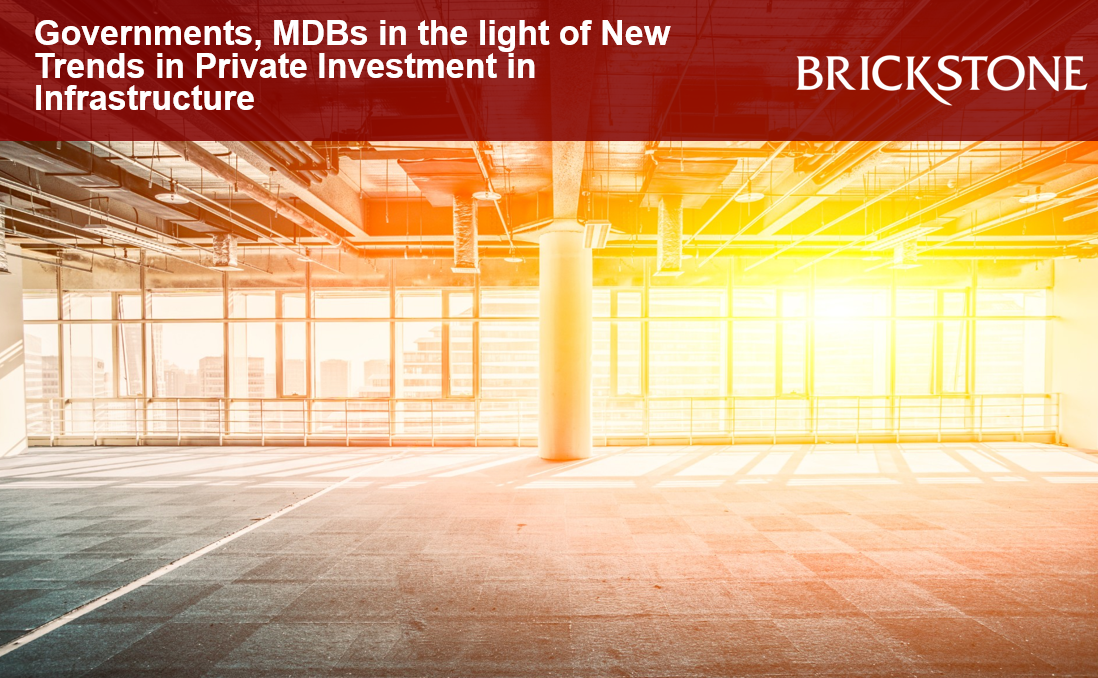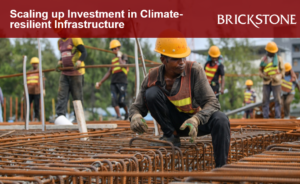Governments, MDBs in the light of the New Trends in Private Investment in Infrastructure
Private Investment in Infrastructure
Infrastructure plays a vital role in driving economic growth in both developed and emerging markets. According to the UNDRR, day-to-day life depends on infrastructure and its services, this includes supply-chains, electricity, water and sanitation, and information networks.
Yet, many markets lack functioning and productive infrastructure networks, majorly chaired by the lack of adequate funding. The OECD reports that a $6.3 trillion investment is needed between now and 2030 to be in line with delivery of the UN SDGs while $6.9 trillion would be needed in infrastructure investments to meet the Paris Agreement goals. Currently, there is a $15 trillion infrastructure investment gap globally.
However, tackling this gap has become increasingly urgent and, at the same time, even more difficult as long-lasting impacts from the COVID-19 pandemic, economic and geopolitical uncertainty, and climate change are limiting the investment capacity of governments into resilient and essential infrastructure. This has over the years heightened the need to mobilise private capital to close the growing global infrastructure investment gap.
With new global trends and insights emerging on private investment in infrastructure – majorly on stagnation despite investment attractiveness and potential – governments, MDBs, and investors are needed to do more to improve these situations.
This article by Brickstone reviews GiHub’s recent report on the role of Governments, MDBs, and investors in the light of the New Trends in Private Investment in Infrastructure.
New Trends in Private Investment in Infrastructure
A report by GitHub in 2021 showed that private investment in infrastructure projects continued to grow in high-income countries (80% of private investment occurred in high-income countries), while it continued a declining trend in middle- and low-income countries.
The private sector has an important role to play, mainly through public-private partnerships to build core infrastructure as a pillar for economic growth and development.
This trend is particularly worrying as infrastructure is needed the most in these countries and the financing gaps are largest. Almost two-thirds of the world’s infrastructure needs by 2035 are in emerging economies. Not only do many of these countries lack the basic infrastructure to support economic growth and development, but they are also the ones most vulnerable to the adverse impacts of climate change, hence the need to invest wisely to mitigate and adapt to climate risks.
Another major global trend is the rise of green investment in infrastructure projects as it continued in 2021. According to GitHub, global private investment in infrastructure projects was ‘greener’ than ever in 2021, at a record high of 60% of total private investment in infrastructure projects. The most of this green investment is in the renewable energy sector, garnering almost half of all private investment in infrastructure projects in 2021. However, the overall level of green investment outside renewables remains low.
Accordingly, in 2021, sustainable financing kept gaining ground – 20% of private investment in infrastructure projects was financed either by a green bond (10%) or a green loan (11%). This is more than double the average sustainable financing share (9%) in the five years before 2021. Although the trend is most evident in high-income countries, sustainable financing is starting to emerge in middle- and low-income countries also.
During the first half of 2022, rising inflation and interest rates have affected returns on infrastructure equities significantly less than returns on listed global equities, reflecting the resilience and stability of infrastructure assets. At the same time, private investors are allocating more capital than ever towards infrastructure to mitigate inflation risk. Infrastructure has a relatively stronger inflation hedging potential than other investment options, as the cash flows underpinning infrastructure are either inelastic or indexed to inflation. Furthermore, the report shows that infrastructure debt continues to outperform non-infrastructure debt and improved its performance across all income groups.
What can Governments, MDBs, and Investors do in light of the New Trends in Private Investment in Infrastructure?
According to GitHub, given these global trends, it’s time for the public sector and multilateral institutions to do more to address the consistent challenges the infrastructure sector has faced when looking to mobilise private investment in infrastructure. The trends explored in this article can help to inform future investment policies to steer investment where it’s needed most.
Governments can correct market failures that prevent private investment, by ensuring a stable regulatory environment, setting formal mechanisms for creating a project pipeline, publishing infrastructure plans and providing guarantees for projects that are not economically sustainable.
Multilateral development banks (MDBs) are uniquely placed to respond to the infrastructure investment gap. Direct co-financing of private investment in infrastructure is one way for MDBs to support private investment in middle- and low-income countries where other sources of support are less available. In addition, MDBs can also help crowd in more private capital to infrastructure. Their participation signals to investors the viability, stability, and creditworthiness of an infrastructure project, in turn reducing risk and attracting more private capital.
For example, the African Development Bank recently approved a partial credit guarantee in Benin to raise funds to invest in sustainable development sectors. This credit enhancement will enable Benin to bring private financing for infrastructure projects, meeting the United Nations Sustainable Development Goals targets, including renewable energy and water and sanitation projects.
Read more here.






